- Author: Denise Godbout-Avant
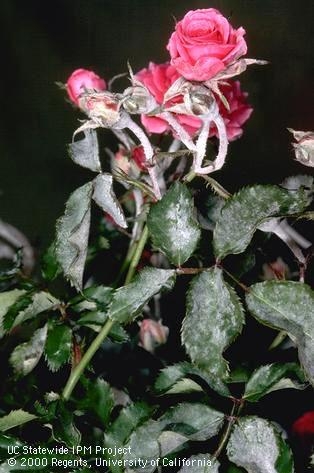
Plant diseases are common at home gardens. About 8,000 species of fungi, 150 species of bacteria, and 500 viruses are known to cause disease in plants.
The rose bush has powdery mildew, the apple tree is infected with fire blight, and the peach tree has peach leaf curl. These three diseases are the most familiar diseases found in home gardens in our area.
Powdery Mildew
Powdery mildew is caused by several fungi and affects a wide variety of plants with different species affecting ornamentals, fruits and berries, and vegetables. White powdery spots spread throughout the surface of leaves giving the appearance they have been sprinkled with flour. Leaves become twisted and distorted, turning brown or yellow, and drop off. It thrives in shady areas of warm, dry Mediterranean-type climates, thus is more prevalent than many other diseases in our dry summer and fall seasons. The fungi spores are carried by wind to new hosts. Plants affected include roses, crape myrtle, dogwood, peach, apple, grapes, squash, cucumber, cantaloupe, and beans.
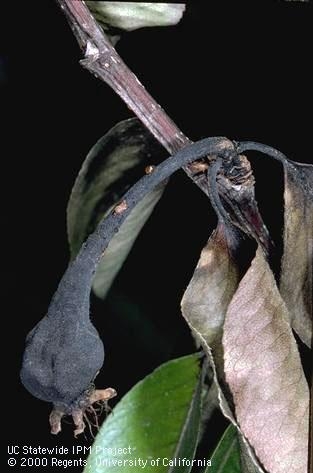
- Powdery Mildew on Fruits and Berries https://ipm.ucanr.edu/PMG/PESTNOTES/pn7494.html
- Powdery Mildew on Vegetables https://ipm.ucanr.edu/PMG/PESTNOTES/pn7406.html
- Powdery Mildew on Ornamentals https://ipm.ucanr.edu/PMG/PESTNOTES/pn7493.html
Fire Blight
Fire blight is caused by the bacteria Erwinia amylovora. It generally attacks the plant's blossoms, moving onto the branches, getting its name from the burnt appearance of the flowers and twigs. Symptoms include sudden wilting, shriveling, and blackening of shoots and blossoms, and a bacterial ooze secreting from cankers (a localized discolored, sunken, circular dead area). It is easily spread via water or rain splashing, insects and birds, other infected plants, and unclean gardening tools. Late spring or early summer, during warm, moist conditions is the period of greatest spread. Plants affected include apples, pears, quince, crabapple, hawthorn, tomatoes, and potatoes. The disease can destroy limbs and even the entire plant.
Unfortunately, fire blight is difficult to control. On susceptible trees like pear, Asian pear, and some apple varieties, blight symptoms should be removed as soon as they appear in spring. To ensure removal of all infected wood, cut the branch at least 6” from the visible infection, and dip pruning shears in a 10% bleach in water solution between cuts.
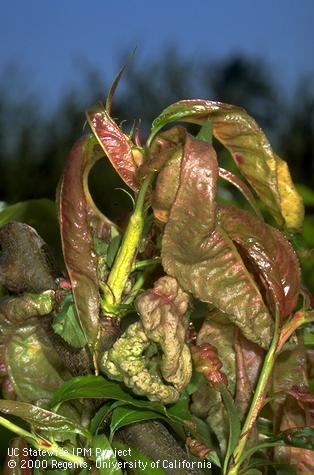
Learn more about Fire Blight from UC IPM at https://ipm.ucanr.edu/PMG/PESTNOTES/pn7414.html
Peach Leaf Curl
Peach leaf curl is a fungal disease caused by Taphrina deformans which affects only peach and nectarine trees. As the Latin species name suggests, symptoms include leaves that become deformed in the spring. New leaves and shoots form reddish blistering, pucker and curl, thickening, then becoming yellow or grayish white, and may drop off. Cool, wet spring weather prolongs disease development, which spreads by rain and water splashing. A second set of leaves may replace fallen leaves and tree growth may appear normal. However, spores that can infect next year's growth may remain.
Treat peach leaf curl in late fall and winter with copper-based products. During wet years such as this one, a second application may be required in late winter, before flowers begin to bloom.
Learn more about Peach Leaf Curl from UC IPM by visiting https://ipm.ucanr.edu/PMG/PESTNOTES/pn7426.html
Help Prevent Spread and Manage Plant Diseases
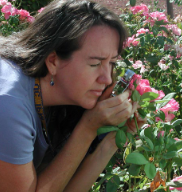
- Choose plants that are tolerant or resistant to the disease.
- Identify the disease affecting your plant.
- Learn the conditions when the disease thrives, how it spreads, and when it is dormant, so can determine the best way to manage it.
- Clean cutting and pruning tools in between cuts with a solution of 3:1 denatured alcohol to water or 10% bleach solution to reduce the spread of disease.
- Always follow instructions on pesticide labels, ensuring you have the right chemical for the specific disease you are attempting to manage, use the correct dosage listed, and apply at the most effective time of year and day.
Need Help? Contact a UC Master Gardener Office Near You!
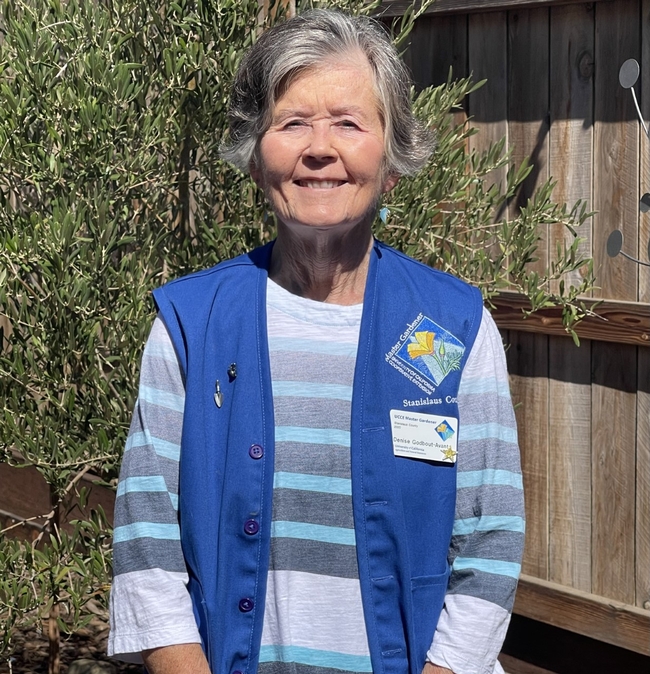
For Stanislaus County, visit our website at https://ucanr.edu/sites/stancountymg/Application_Information/ to find our phone number, hours, and to fill out an online survey where you can submit photos.
It's best to contact the office nearest you, as climates, plant species, diseases, insects and other factors vary across the state of California.
Resources
UC Integrated Pest Management (UC IPM) is an excellent source to find information on other common garden diseases and pests (https://ipm.ucanr.edu/) and you can also watch a Webinar about Plant Diseases and Abiotic Disorders at https://www.youtube.com/watch?v=lZra4jibb4U
Denise Godbout-Avant has been a UCCE Master Gardener with Stanislaus County since 2020.


Thank you.